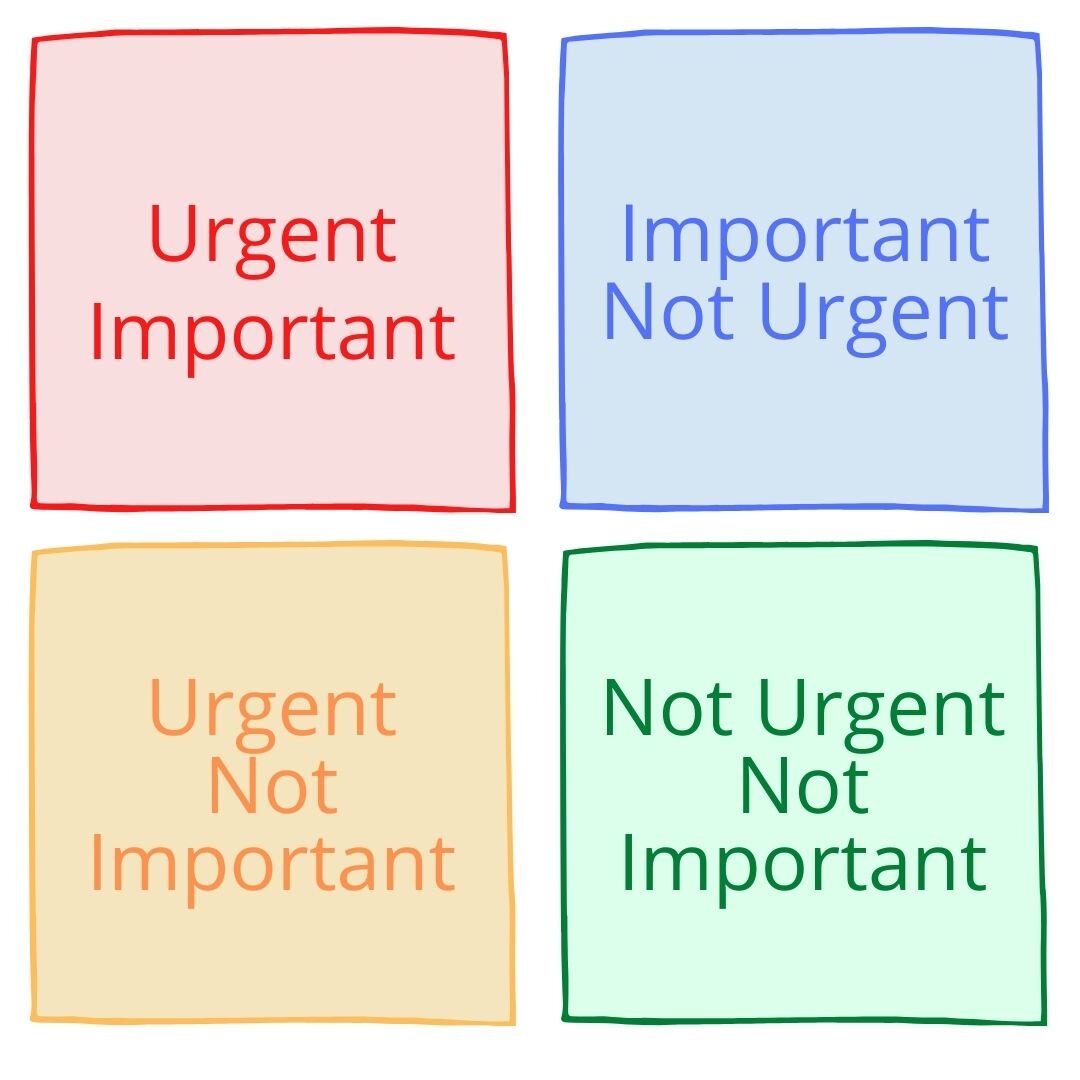3 Questions to Ask Yourself When Setting Your Daily Priorities
Do you ever get to midafternoon and wonder where your day has gone? You started out with great intentions to do all of the things...but then you got pulled from one thing to another and now here we are. The bewilderment of “where did the time go?” and “what did I actually accomplish?”
As I like to tell my clients, if you don’t choose your priorities for yourself, someone or something else will choose them for you. You became an entrepreneur--at least in part--for the freedom of deciding for yourself what you want to do and where you want to go in your life and business. If you’re not making a conscious choice with your daily priorities, then are you being the entrepreneur you desire to be?
Well, let’s fix this now. What do you say?
What you do during your day is what you prioritize.
Start by taking a look at what’s on your calendar now. Whether consciously or unconsciously, what you decide to do in a day is what you are prioritizing. Are these the things you want to be doing with your time? Are these the things that will take your business where you want it to go? Are these the things that light you up and give you energy?
If you’re answer is “no” to these questions, then it’s time for a scheduling makeover. Look at where these things you are prioritizing are coming from. Why are they getting done and not the things you truly want to do? Are they distractions? An excuse for procrastination?
Now, let’s dive into three questions to ask yourself to help determine YOUR daily priorities:
1. The One Thing:
If nothing else happens today, what is the one thing you can do that will have the greatest positive impact?
Out of all of the tasks you have on your to-do list, there are only about 20% of them that have a true impact. According to the Pareto Principle, these key 20% are the things that get you 80% of the way to your goal. Meanwhile, the other 80% of your tasks only accomplish about 20% of your goal. So, prioritizing one of these needle-movers today will accomplish more for you than the majority of your to-do list.
Think about a recent success you’ve had in your business. Maybe it was a program or product launch. Maybe it was signing a new client. What was the one thing that contributed most to that success? This task, this one thing, is a needle-mover for you. Instead of getting bogged down in pursuing multiple channels and angles, think about choosing one--the one that will send you lightyears ahead in your business.
Overall, you should find that you have no more than 2-3 things that are actually at the root of your successes. When you complete these tasks, it makes other tasks on your list obsolete or redundant.
2. Urgent vs. Important:
Is this an urgent diversion or a long-term benefit?
It can be easy to get pulled into firefighter mode in your business. A client sends you a message. Your bookkeeper has a question. Another DM just came through. Nobody likes seeing those little numbers light up in that red circle on your phone showing all the things you’re missing. But is jumping from fire to fire getting you closer to where you want to go in your business? Are they helping you be the entrepreneur you want to be?
What if you worked proactively instead of reactively? What if you planned your time in such a way that you anticipated issues before they popped up? What if you had the time to create that new program, write that book, and learn new skills?
You’ve probably heard me talk about the Eisenhower Matrix before, but here’s a quick recap. The Eisenhower Matrix is a system of organizing how you spend your time based on two factors: Urgency and Importance. It looks like this.
The top left category (Urgent Important) contains such things as today’s client sessions, a current or impending launch, a live interview, or another task that both needs your attention now AND is critical to your overall success. You should spend no more than about 20-25% of your time here.
The top right category (Important Not Urgent) is for the activities that propel your business forward toward long-term success. This would be networking and partnership opportunities, self development, brainstorming and content creation, self care, goals and progress assessment, bookkeeping, etc. These are all of the things that you know are essential, but unless planned for and scheduled, may tend to get pushed aside in favor of something urgent. This is actually where you should be spending about 70% of your time.
The bottom left category (Urgent Not Important) is for the things that--at first glance--may seem important, but are actually a bit of a time suck. These are your emails, text messages, social media, and phone calls. They could be updates to your website or the time you spend going back and forth trying to schedule a client. It’s the space where you can get distracted and derail your day. As I talk about in Your To-Do List: Remember the 4 Ds, this is the delegation category. These are all things that you could potentially delegate or automate in your business. If you can, look for opportunities to take these things off your plate. For the pieces that remain for you to do, try creating specific time blocks for them so that they won’t take up more time than needed. The Urgent Not Important Category should occupy about 5-10% of your time.
The bottom right category (Not Urgent Not Important) contains things that waste your time. It could be falling down the social media rabbit hole watching cat videos and mindlessly scrolling. It could be participating in meetings without a specific purpose or objective. It could be continuing to do tasks and activities that no longer serve you. So, it’s probably no surprise that you shouldn’t be spending your time in this box. At all.
So, take a look at what tasks you have and which categories they fall into. Where are you spending your time? If you find that your time is being consumed by the urgent instead of the important, try making one Important Not Urgent thing a priority each day to allow yourself the space to shift into a more proactive, intentional place.
3. 1% Progress:
Does this move me toward my goals?
It’s easy to get swept away with the idea of overnight success. So many “experts” try to sell us on the idea that if we do their easy method or program, we’ll immediately be the millionaires we all want to be. As you spend more time in the entrepreneurial world, you begin to see that success is never overnight. It’s slow and steady. It takes time and determination. Even the people that seem to have meteoric rises set their foundation and conditions for success years before.
So what should our expectations be? In alignment with the slow and steady outlook, I suggest more of a 1% approach. Is what I’m doing today moving me one small step (or 1%) toward my goal? By asking yourself if what you're doing moves you ultimately in the direction you want to go, you can make sure your priorities align with your business goals. It can be easy--especially in day-to-day activities--to be pulled off course with a side project or new opportunity. While these can be fun and shake things up from time to time, they can throw you off course when they start taking regular priority spots on your calendar.
Okay. Let’s recap. It’s Sunday night and you’re ready to plan your week. How do you determine the projects and tasks you will prioritize each day this week? Ask yourself these questions:
If nothing else happens today, what is the one thing you can do that will have the greatest positive impact?
Is this an urgent diversion or a long-term benefit?
Does this move me toward my goals?




